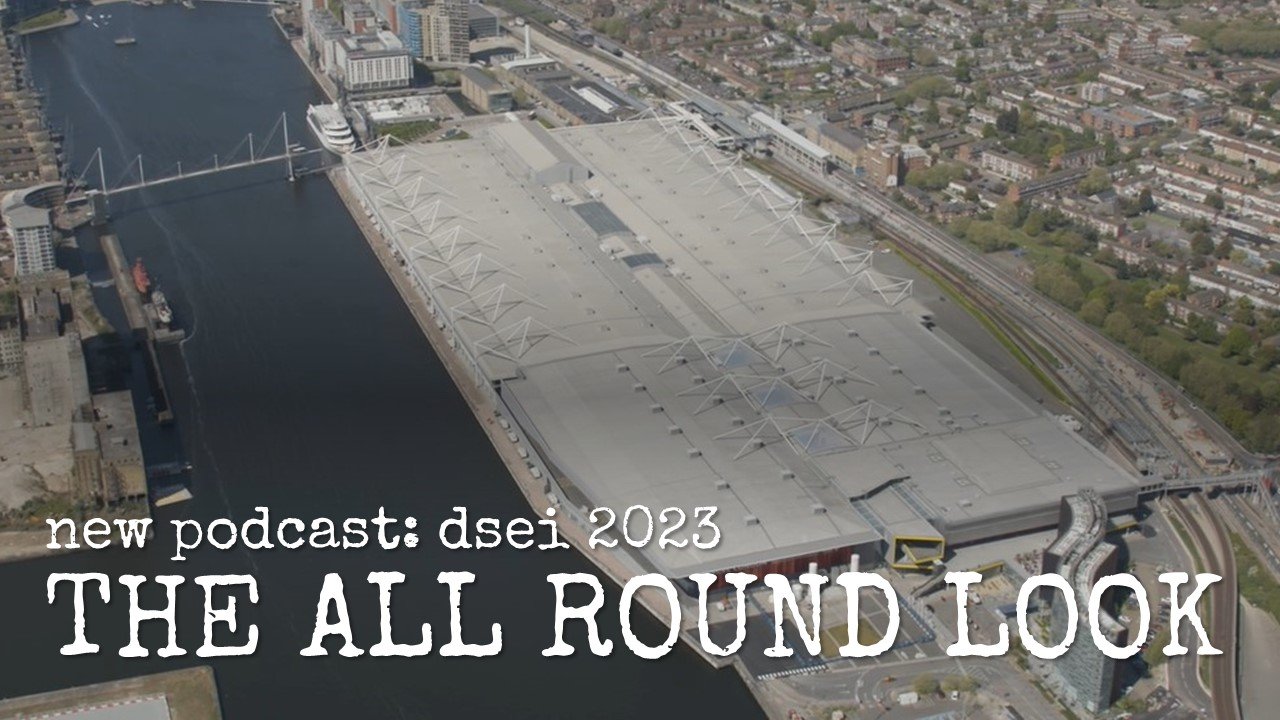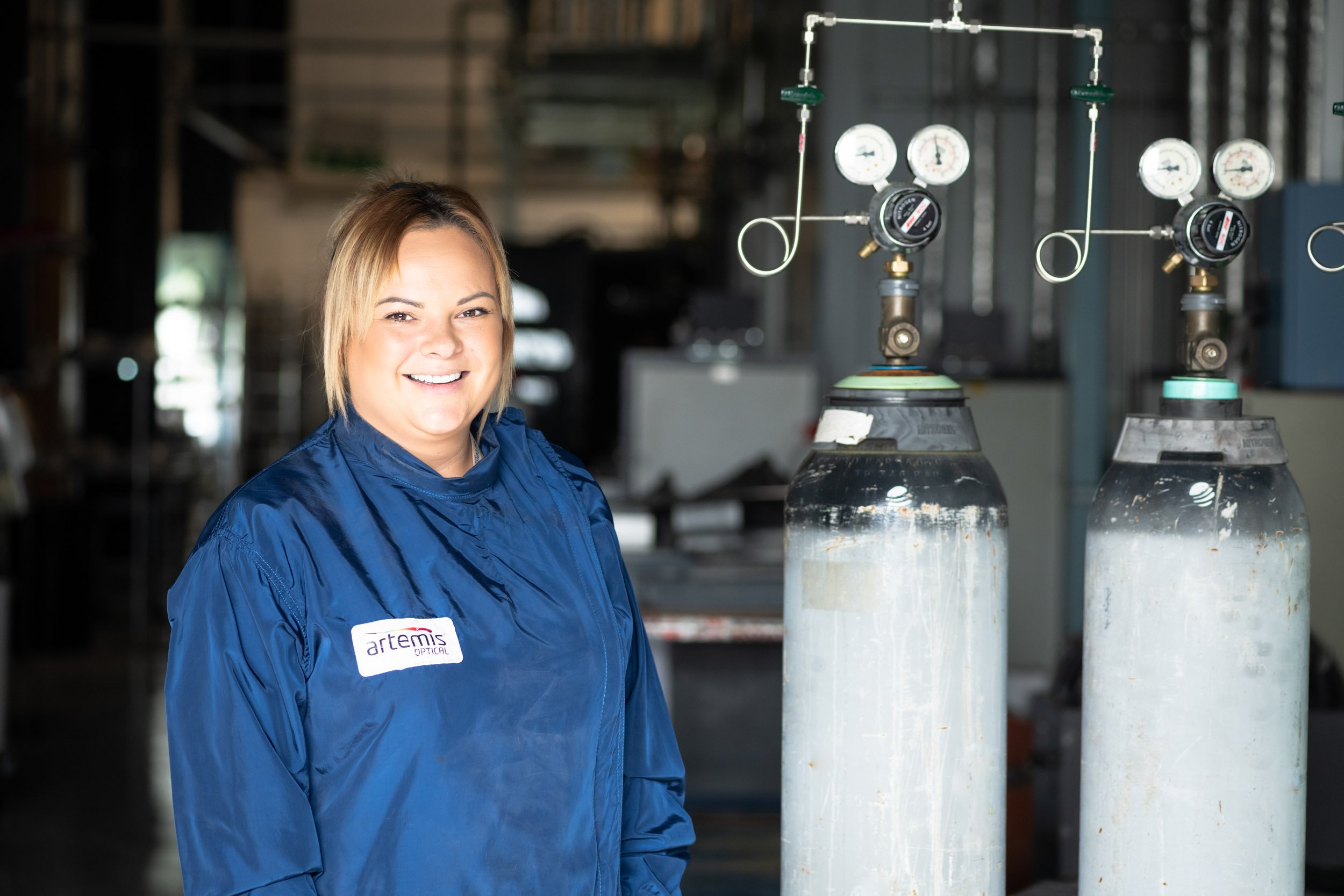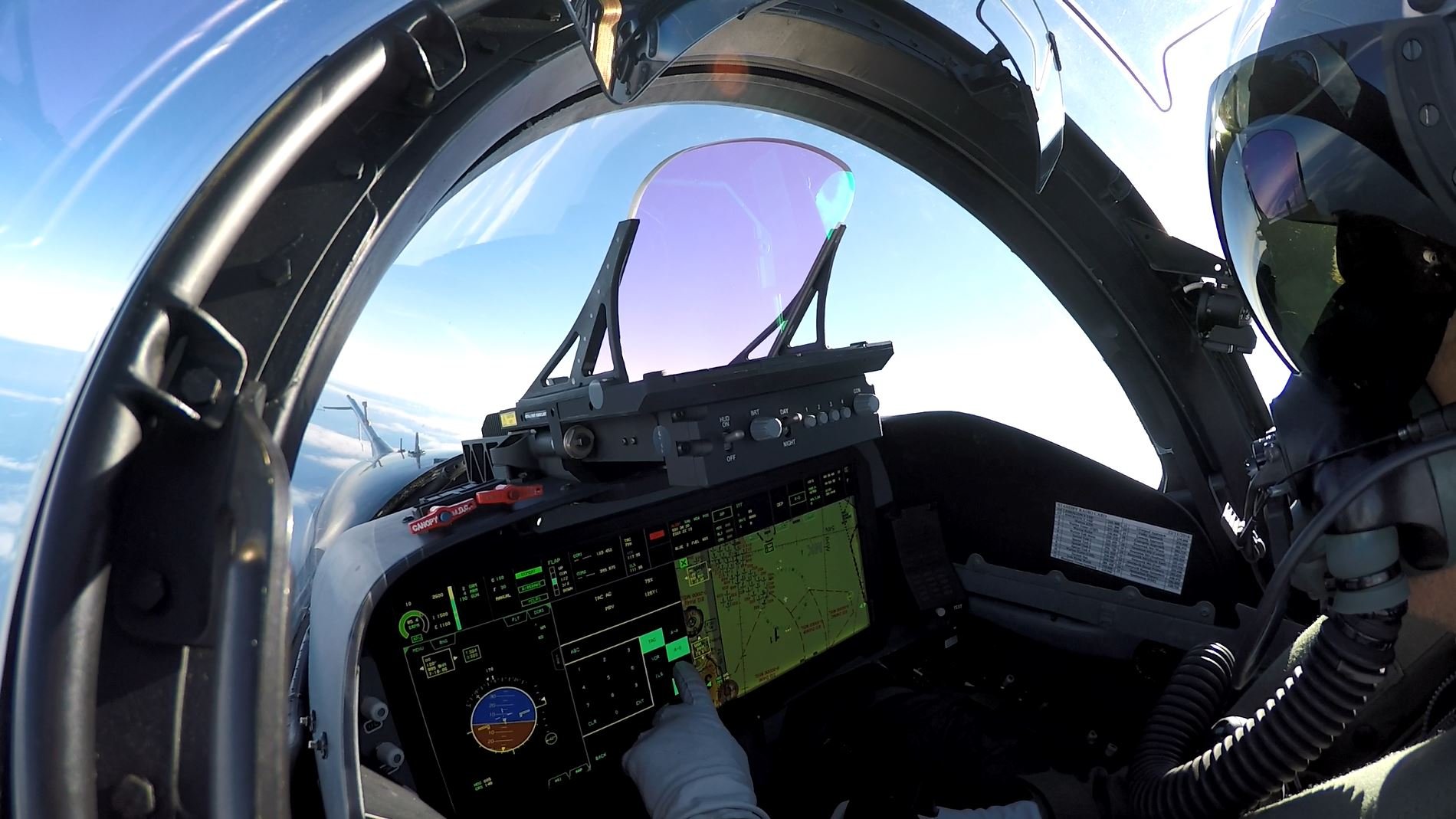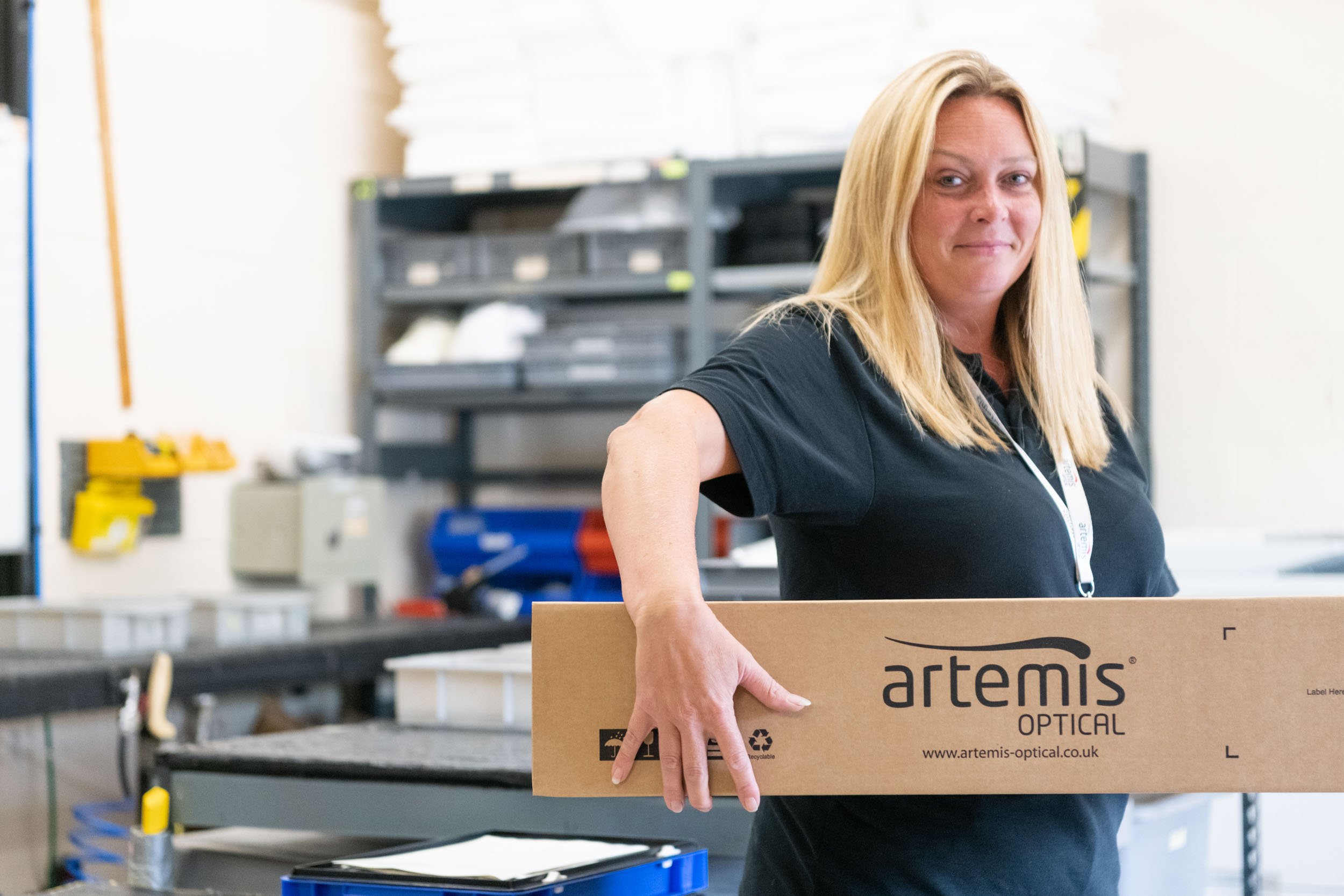
Head-up Display Systems (HUD)
A head-up display (HUD) is an advanced technology that enables the projection of essential information onto a transparent screen, creating a virtual image that appears to be floating in space.
By using specialised optics, the virtual image is seamlessly combined with the real-world view seen through the screen, making both images appear to be at the same distance. This screen is commonly referred to as a combiner.
Our Solutions:
Top Photo: LiteHUD™ Low Profile Head Up Display flying on Advanced Hawk. © BAE Systems.
HUDs are particularly useful in aircraft, as they allow pilots to access critical flight data without needing to refocus on flight instruments. In recent years, this technology has also been adapted for use in automotive windshields and other applications.
Our Head Up Display solutions utilise state-of-the-art rugate filters to deliver exceptional colour neutrality and image brightness. These filters can be tailored to include single or multiple colour-selective notches, enabling users to choose the specific colour or colours they want to reflect. Additionally, our angle-of-incidence compensated coatings ensure consistent brilliance across the entire display, while amplitude graded combiners are available to provide a seamless display balance.
Our Solutions:
We offer both single and dual plate head-up display combiners, giving customers the flexibility to select the technology that best fits their specific application. To further enhance system performance, we also provide a plate matching service that ensures the highest level of compatibility between components. Our company is widely recognised for producing uniform, environmentally robust coatings that deliver consistent brilliance across the plates and support the longevity of the combiner.
In summary, head-up display technology has revolutionised the way pilots and drivers access vital information, blending virtual images with the real world for seamless integration. Our HUD solutions, which incorporate advanced rugate filters, angle-of-incidence compensated coatings, and a choice of single or dual plate combiners, provide exceptional performance and adaptability to meet the needs of various applications.
